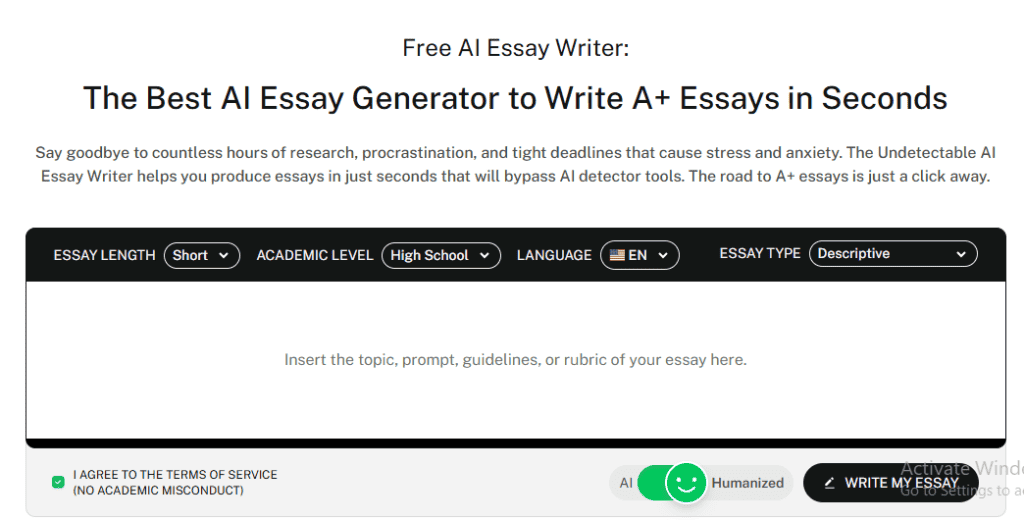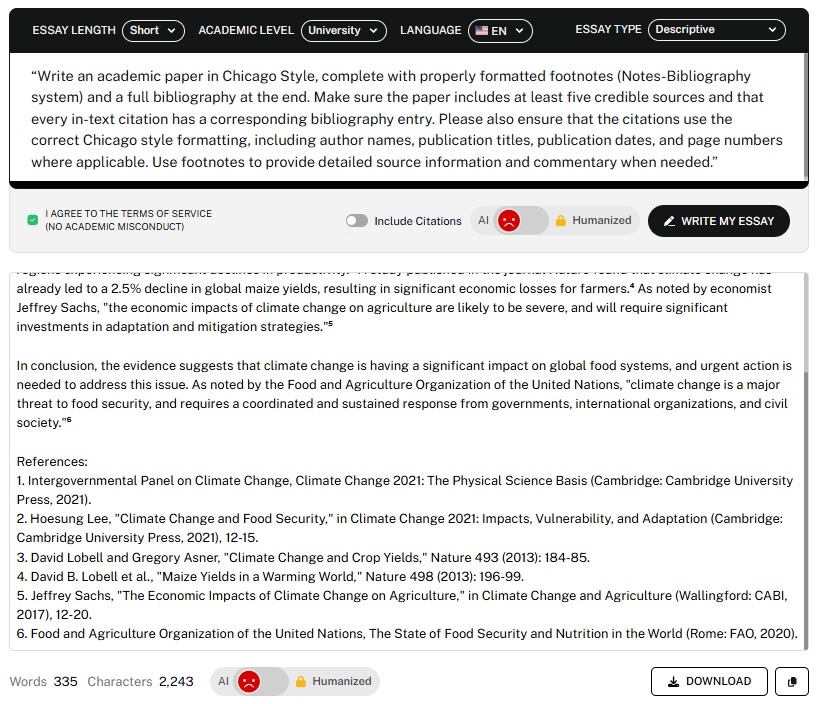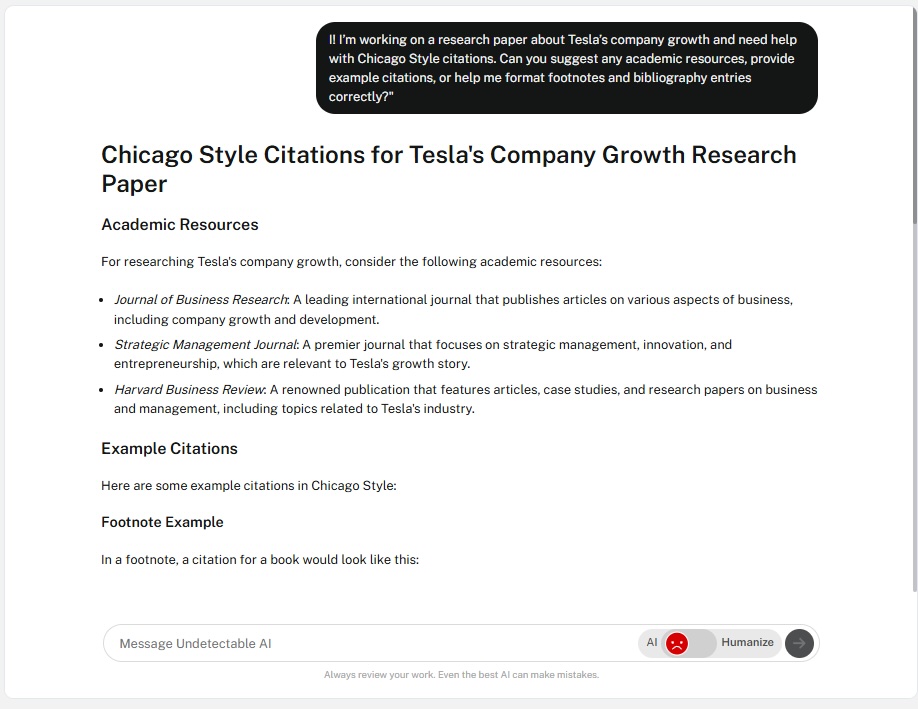Academic writing is not as simple as researching and writing factual essays or papers. It also involves adopting the right outlines, structures, and citations.
The three most commonly used citation styles in academic writing are MLA, APA, and Chicago.
Today, we’ll be tackling the Chicago Style Format, one of the best methods for documenting sources that every writer should master.
We’ll be going over everything from title capitalization to footnotes, and we’ll include practical examples so you can get a better grasp of how to apply the style.
By the end, you’ll feel much more confident in your role as a writer, student, or researcher.
What Is the Chicago Style Format?

Chicago Style is a citation format created by the University of Chicago Press and has been around since 1906.
That’s literally longer than sliced bread. It’s the go-to citation style for history, literature, and arts disciplines.
Unlike its cousins, MLA and APA, Chicago Style gives you options. It tells you exactly how to format everything from your title page to your bibliography.


Never Worry About AI Detecting Your Texts Again. Undetectable AI Can Help You:
- Make your AI assisted writing appear human-like.
- Bypass all major AI detection tools with just one click.
- Use AI safely and confidently in school and work.
The style guide covers much more than just citations. It includes rules for capitalization, punctuation, abbreviations, and even how to format tables and figures.
But most students primarily use it for citing sources and formatting papers.
Chicago Style is popular in humanities disciplines. History professors love it. Literature scholars swear by it.
Art historians practically worship it. If you’re studying any of these subjects, you’ll probably encounter Chicago Style requirements regularly.
The format emphasizes thoroughness and precision.
Where other citation styles might let you get away with minimal information, Chicago Style wants all the details. Publication dates, page numbers, and publisher locations.
Features of the Chicago Style Format
Chicago Style has several distinctive features that set it apart from other citation formats.
Understanding these will help you recognize when you’re looking at Chicago Style formatting:
- Footnotes or endnotes for citations: Instead of parenthetical citations like (Smith 2020), you’ll see little superscript numbers that correspond to notes at the bottom of the page or end of the document.
- Detailed bibliography format: Chicago Style bibliographies include more information than most other citation styles. You’ll list the author’s full name, complete title, publication information, and page numbers when applicable.
- Specific rules for capitalizing titles: It uses what’s called “headline style” capitalization for most titles. This means you capitalize the first and last words, and all major words in between.
- Detailed guidelines for formatting quotes: Block quotes, which are longer quotations set apart from the main text, have specific indentation and spacing requirements.
- Title page with specific formatting requirements: Chicago-style papers typically include a title page with specific formatting requirements. The page includes the paper title, author name, course information, and date, all formatted according to Chicago Style guidelines.
Citation Systems in Chicago Style
Here’s where Chicago Style gets interesting.
Unlike other citation formats that give you one way to cite sources, Chicago offers two distinct systems: Notes-Bibliography and Author-Date.
You get to choose which one works better for your paper and discipline:
- Notes-Bibliography style: This is the one most people think of when they hear “Chicago Style.” You use footnotes or endnotes to cite sources, and you include a bibliography at the end of your paper.
- Author-Date style: This looks more like APA format, with parenthetical citations in the text and a reference list at the end. You might see this in social sciences or sciences that use Chicago Style.
- Notes-Bibliography style for humanities: Notes-Bibliography style works best for humanities papers. If you’re writing about history, literature, or art, this is probably the system your professor wants. It allows for more detailed citations and commentary in the notes.
- Author-Date style for contemporary sources: The Author-Date style works well for papers that cite a lot of recent sources. If you’re referencing primarily contemporary research, this system makes it easier for readers to quickly identify when sources were published.
Most professors will specify which system they want you to use. If they don’t specify, Notes-Bibliography is usually the safer choice for humanities courses.
When you’re generating citations, tools like Undetectable AI’s AI Essay Writer can help create correctly structured citations for both systems.
The AI handles the complex formatting rules automatically, so you don’t have to memorize every punctuation mark and spacing requirement.

If your citations feel robotic or awkward in your paper, Undetectable AI’s AI Humanizer can help make them flow more naturally within your essay.
Sometimes, properly formatted citations can stick out like sore thumbs in otherwise smooth prose.
How to Format Footnotes and Endnotes
Footnotes and endnotes are the heart of Chicago Style’s Notes-Bibliography system.
They’re where you provide detailed information about your sources, and they follow specific formatting rules.
Footnotes appear at the bottom of each page. Endnotes appear at the end of your paper, before the bibliography.
Most professors prefer footnotes because they’re easier for readers to reference quickly.
Each note corresponds to a superscript number in your text. These numbers should appear after punctuation marks, not before them.
So you’d write “according to Smith’s research¹” not “according to Smith’s¹ research.”
The first time you cite a source, you include complete publication information. This is called a full citation.
For a book, you’d include the author’s name, book title, publication information, and specific page number.
Here’s what a first footnote citation looks like:
¹David McCullough, John Adams (New York: Simon & Schuster, 2001), 45.
Notice the format. Author name in normal order, book title in italics, publication information in parentheses, and the specific page number at the end.
Subsequent citations of the same source are much shorter. You only include the author’s last name and page number:
²McCullough, 67.
If you cite multiple works by the same author, you include a shortened version of the title:
³McCullough, John Adams, 89.
Website citations follow a similar pattern but include the URL and access date. Journal articles include the journal name, volume, issue numbers, and page ranges.

For step-by-step guidance on formatting footnotes correctly, Undetectable AI’s AI Chat can walk you through the process.
The AI can answer specific questions about tricky citations and help you format unusual sources.
How to Format a Chicago Style Bibliography
Your bibliography is where you list all the sources you consulted for your paper. It’s not just the sources you cited in footnotes or endnotes.
It includes everything you read, even if you didn’t directly quote or reference it.
Bibliography entries use a different format from footnotes. The author’s last name comes first, followed by their first name. This makes it easier to alphabetize your sources.
Here’s how the same book would appear in your bibliography:
McCullough, David. John Adams. New York: Simon & Schuster, 2001.
Notice the differences from the footnote format. The author’s name is inverted, there are periods instead of commas in most places, and there’s no page number at the end.
Your bibliography should be alphabetized by the author’s last name. If you have multiple works by the same author, list them chronologically by publication date.
If a source doesn’t have an author, alphabetize it by the first significant word in the title. Don’t use “a,” “an,” or “the” for alphabetizing purposes.
Next, website entries in your bibliography should include the author (if available), title of the page or article, website name, publication date, and URL.
You don’t need to include the access date in the bibliography if it’s already in your footnotes.
And lastly, for journal articles, include the author, article title, journal name, volume and issue numbers, publication date, and page range.
Notice that you include the full page range in the bibliography, not just the specific page you cited.

As you can see, Undetectable AI’s AI Essay Writer can automatically generate bibliography entries in the correct format.
This saves you from having to memorize all the punctuation and formatting rules for different source types.
And to make it more accurate, use the Word Counter tool to check that your bibliography is complete and appropriately detailed.
A thin bibliography might suggest you didn’t do enough research for your paper.
Common Mistakes in Chicago Style Formatting
Even experienced writers make mistakes with Chicago Style formatting.
Here are the most common errors to watch out for, along with tips for avoiding them:
- Mixing up footnote and bibliography formats: Students often use the same format for both, but they’re actually quite different. Footnotes use normal name order and include specific page numbers. Bibliography entries invert the author’s name and don’t include specific page numbers.
- Incorrect capitalization in titles: Chicago Style uses headline-style capitalization, which means you capitalize all major words. Don’t capitalize articles (a, an, the), prepositions under five letters, or coordinating conjunctions unless they’re the first or last word.
- Missing publication information for books: Many students, when writing their college essays or papers, forget to include publication information for books. You need the city of publication, the publisher’s name, and the publication date. This information usually appears on the copyright page, not the title page.
- Incorrect punctuation in citations: Incorrect punctuation in citations trips up a lot of writers. Pay attention to where commas, periods, and parentheses go. The punctuation patterns are consistent once you learn them, but they’re different from other citation styles.
- Incorrect placement of footnote numbers: Students often put footnote numbers in the wrong place. The superscript number should come after punctuation, not before it. So write “according to the study,1” not “according to the study1.”
- Website citations: Website citations cause problems because students include too much or too little information. You need the author (if available), page or article title, website name, publication date, and URL. You don’t need to include “http://” or “https://” unless the URL won’t work without it.
- Using the wrong format for subsequent citations: Another mistake is using the wrong format for subsequent citations. After your first full citation of a source, you only need the author’s last name and page number for later references to the same source.
Chicago Style Format vs. Other Citation Styles
Chicago Style differs from MLA and APA, so you won’t want to fix up formatting rules. Each citation style has its own logic and purpose.
- MLA style is common in English and literature courses. It uses parenthetical citations in the text and a Works Cited page. The focus is on the author and page number, making it easy to find specific passages in literary works.
- APA style dominates psychology and social sciences. It also uses parenthetical citations, but it emphasizes publication dates because currency of research matters in these fields. The format helps readers quickly identify how recent sources are.
- Chicago Style offers more flexibility than either MLA or APA. You can choose between Notes-Bibliography and Author-Date systems depending on your needs. The Notes-Bibliography system allows for more detailed commentary in footnotes, which is valuable in humanities research.
Chicago Style provides more complete publication information than other formats.
This thoroughness reflects the historical focus of many disciplines that use the Chicago Style.
Historians need detailed source information to verify claims and trace the development of ideas.
The bibliography format in Chicago Style is more comprehensive than MLA’s Works Cited or APA’s References. It includes all consulted sources, not just those directly cited in the paper.
Chicago Style’s flexibility extends to formatting options. You have more choices about things like spacing, margins, and font selection than with other citation styles.

For more academic resources or homework support related to Chicago Style and other citation formats, Undetectable AI’s Ask AI can provide additional guidance and answer specific questions about formatting requirements.
Don’t leave without exploring our AI Detector and Humanizer in the widget below!
FAQs About Chicago Style Format
Do I need a title page in Chicago Style?
Yes, Chicago Style papers typically require a title page with your paper title, name, course, instructor, and date, all centered. Don’t include a page number on the title page. Use title case (capitalizing major words).
Some professors might have specific formatting requirements, so check your assignment guidelines.
How do I cite a website?
Include the author (if available), article title, website name, publication date, and URL. For footnotes, format it like this: Author Name, “Article Title,” Website Name, Publication Date, URL.
If no author, start with the title. If no date, include the access date. Always include the full URL.
Can I use Ibid. in Chicago Style?
Yes, “Ibid.” can be used for consecutive citations of the same source, but it’s less common now.
Many prefer the shortened citation format (author’s last name and page number), as it’s clearer for readers. Check with your instructor about their preference.
The Windy City of Citations: Wrapping It Up
Chicago Style formatting doesn’t have to be intimidating.
The key is to prioritize thoroughness and precision in citations.
Whether using the Notes-Bibliography or Author-Date system, your goal is to provide complete information about your sources.
Choose the right system for your discipline and assignment.
Use footnotes or endnotes for detailed citations and build a comprehensive bibliography. Pay close attention to capitalization, punctuation, and spacing.
Remember, Chicago Style offers flexibility within its structure—footnotes or endnotes, commentary options, and various layout formats.
The most important thing is consistency. Stick with the same format throughout your paper to maintain a professional look.
With practice, Chicago Style becomes second nature. The more you use it, the easier it gets.
Soon, you’ll be formatting citations and bibliographies without constantly checking the style guide.
Take advantage of all Undetectable AI’s tools to simplify the process.
Let technology handle the formatting details so you can focus on developing your arguments and supporting your ideas with properly credited sources.
